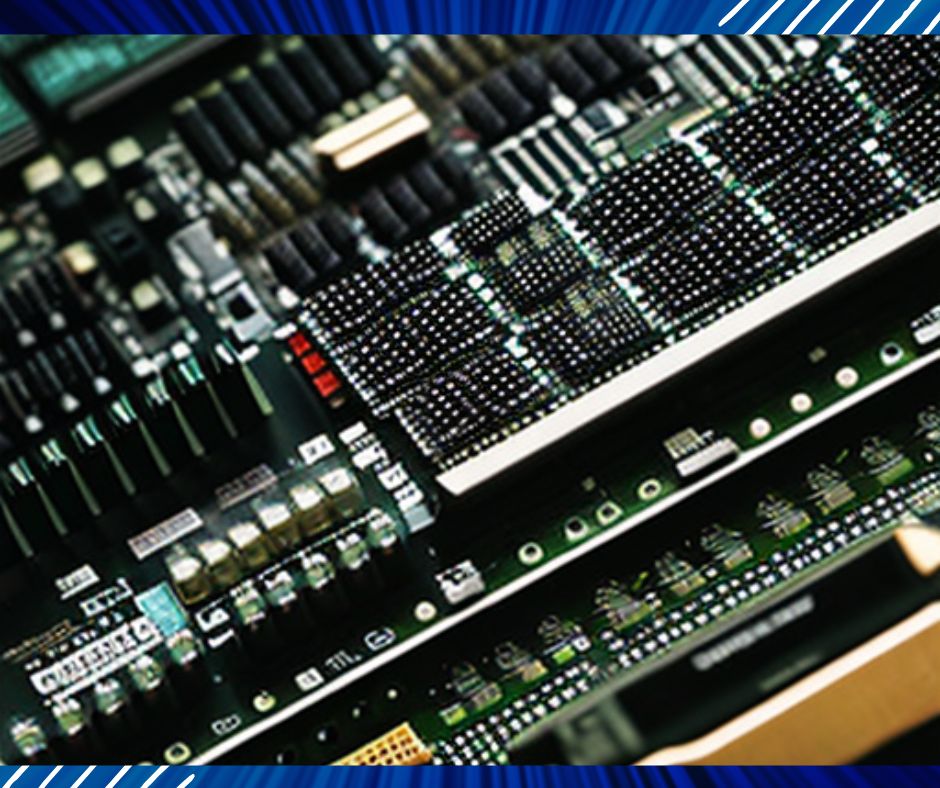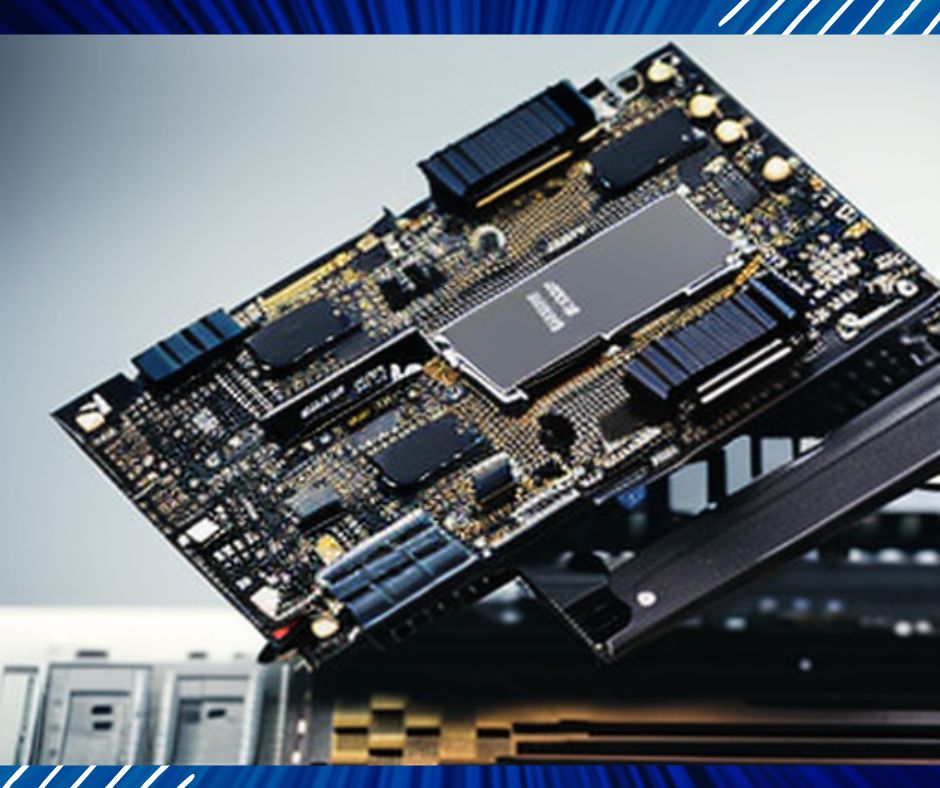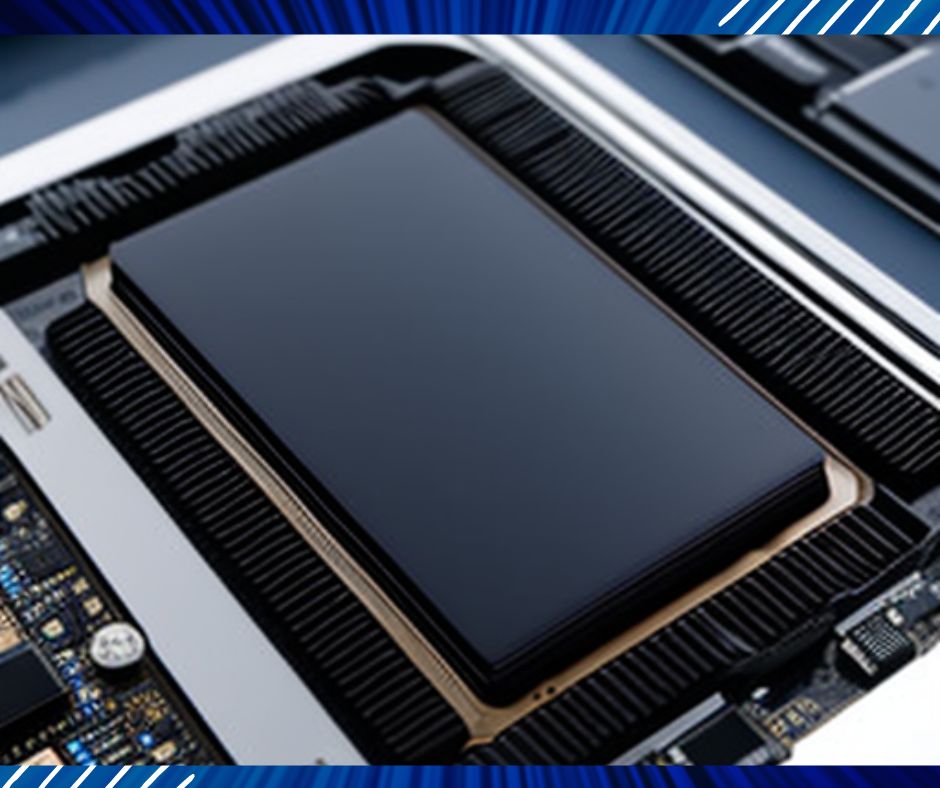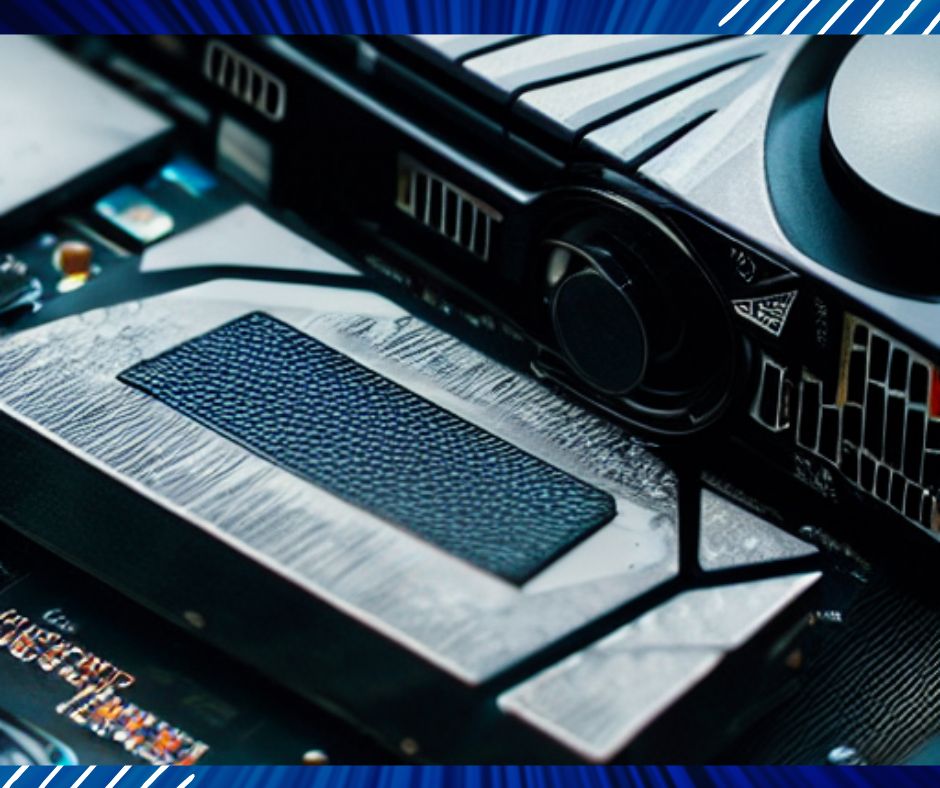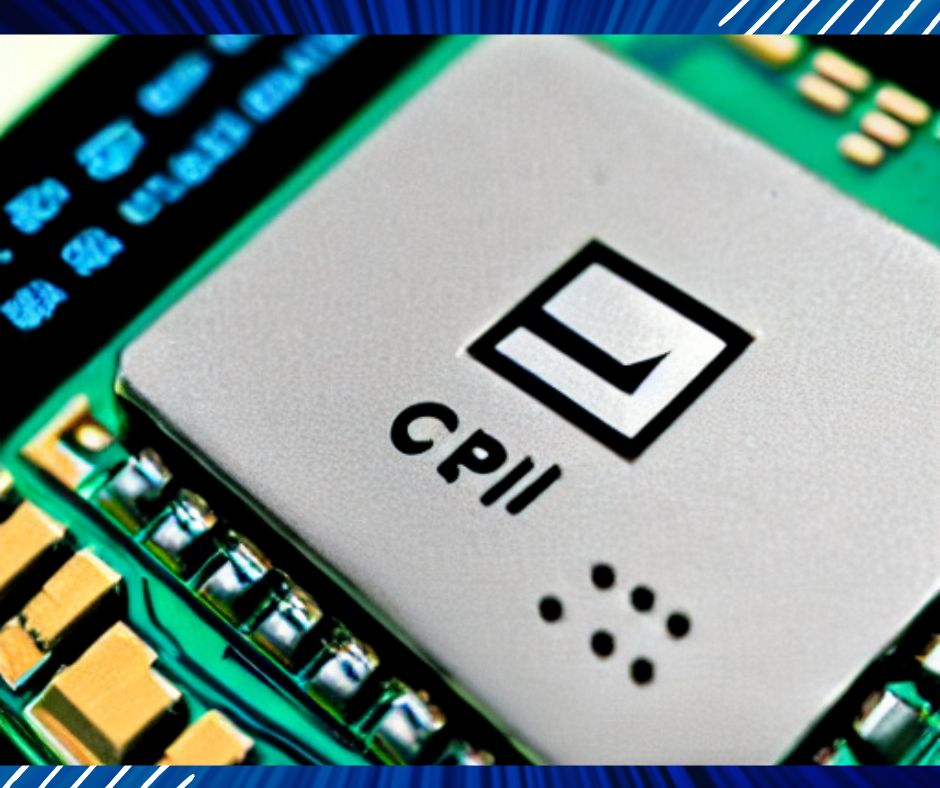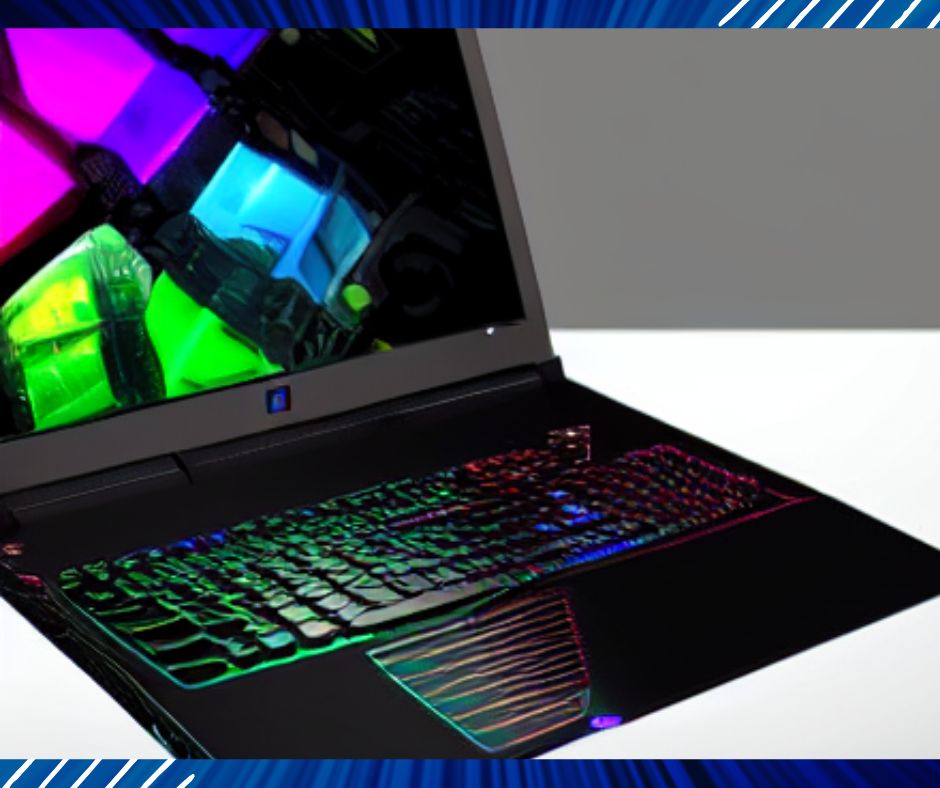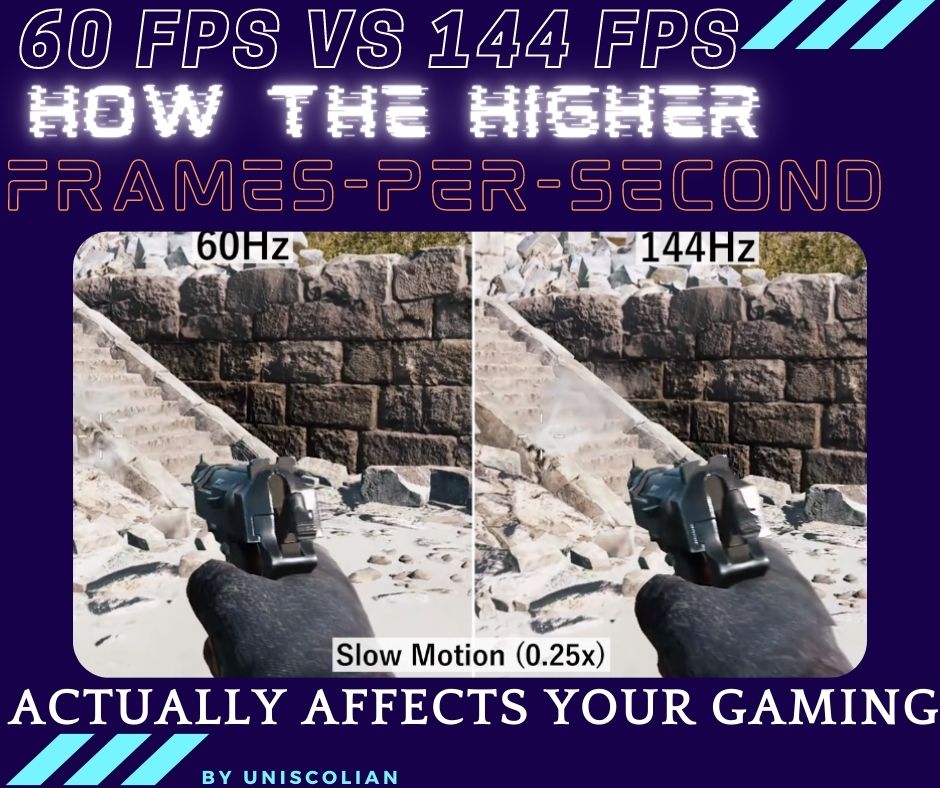
What is the difference between 60 FPS and 144 FPS? It’s a common question, but it can be difficult to answer without going into detail. One of the biggest differences between these two frame rates is in how they affect the gaming experience. You may have heard that higher frames-per-second (FPS) are better for gaming because you get more fluid motion and less lag time with each passing second. This is true, but there are other factors to take into consideration when choosing which one will make your gaming experience better.
What is FPS and what does it mean for gaming
FPS, or Frames per Second, is an indicator of the number of images your computer can produce in one second. The higher this number is, the smoother and more responsive your game will be – but it also requires a higher-powered PC to handle and render all these frames without any lag issues. Although not every video card could reach as high as 60 FPS, the latest generation of NVIDIA cards can handle much higher frames a second.
There are two main types of visual quality: Static and Dynamic. If you’re playing an old role-playing game (RPG), your graphics will be static – there’s no animation or movement on-screen other than what occurs in the menus. The opposite is true for a first-person shooter (FPS). With this type of game, you’re always moving forward and the action on-screen changes based on your position.
The more frames per second you have, the smoother the gameplay will be. Playing a game with 30 FPS can feel like playing on ice – but it’s worth upgrading your PC to play at 60 FPS if possible. That way, when enemies are coming from all directions and bullets fly by your head in quick succession, you’ll never miss a beat.
In order to achieve a higher frame rate, you need more power and better graphics on your video card – which means an expensive upgrade or replacing the whole system altogether. But it’s worth it for those perfect moments where all of your shots hit their mark without any hiccups and enemies die with one shot instead of ten like they would at lower frame rates.
How 60 FPS affects the look of a game
There are a few benefits of having the graphical quality that is 60 frames per second. The first and most important one for many gamers, especially FPS players, is an increase in their ability to accurately react to onscreen events. A common complaint from people playing games at 30FPS or lower is getting shot around corners without being able to see the enemy player. The increased frame rate allows for the gamer to see what is coming and react accordingly, making gameplay more competitive. Another benefit of having a higher FPS are less motion blur and screen tearing which can take away from immersion in some games.
The third and final benefit that can be seen when playing games on a higher FPS is smoother gameplay. This is due to the increased frame rate of 60FPS allowing for less input lag from player inputs, such as mouse movements or keyboard presses, into what appears onscreen. It’s not uncommon for people who are used to 30fps or lower to have some difficulty with the increased input lag of 60fps, but it becomes much more manageable after playing for a while.
Related Article: Why Your PS4 Controller’s Light Is Red? and How to Fix It
How 144 FPS affects the look of a game
The first thing that may be noticed when playing a game at 144 FPS is the fluid motion of on-screen elements. The player will notice smoother camera pans and swings, as well as less judder or stuttering in general gameplay. This makes it easier for players to spot enemies hiding behind cover and react more quickly while aiming down sights with a sniper rifle.
Another benefit of 144 FPS is the elimination or reduction in motion blur and judder present in most 60 FPS games. Motion blur becomes a non-issue as enemies’ movements are sharper on screen, which makes it easier to spot an enemy’s position before they can get into cover. In addition, with less judder, the game is less likely to lose track of a player’s position on screen which can lead to death from unseen enemies.
The fluidity and clarity in motion that 144 FPS provides allows for players to better react in tense situations where split-second decisions are needed, such as with sniping an enemy behind cover or catching an opponent off guard with a melee attack.
The elimination of motion blur and judder also has an aesthetic impact on gameplay, making the game world more immersive by eliminating what some players may perceive as “fake” looking graphics from 60 FPS games. The improvement in visuals is instantly noticeable, giving 144 FPS its nickname: “the buttery smoothness” of games.
The elimination or reduction in motion blur and judder present in most 60 FPS games makes it easier for players to spot enemies hiding behind cover and react more quickly while aiming down sights with a sniper rifle. In addition, the fluidity that 144 FPS provides allows for players to better react in tense situations where split-second decisions are needed, such as sniping an enemy behind cover or catching an opponent off guard with a melee attack.
What is the difference between 60 FPS and 144 FPS
A higher frame rate is smoother and more life-like, while a lower frame rate will appear choppy. So what does that mean? It means the 60 FPS makes everything feel like it’s happening in real-time to you – scrolling through pages of Facebook or opening up new tabs on your web browser feels fluid and natural because there are so many frames in between each second.
At 60 FPS, the game will draw a frame every 16.67 milliseconds. At 144 FPS, this happens every 11.11 milliseconds! This is because of an effect called input lag: when your controller sends its signal to the console (or PC), there’s always going to be some amount of delay before it starts responding and doing as you’re expecting. number one, there are more frames per second so it feels much smoother and natural when playing the game at 144 FPS versus 60 FPS. number two, due to input lag, when your controller sends its signal to the console (or PC) there’s always going to be some amount of delay before it starts responding and doing as you’re expecting.
The higher a game’s frame rate, the smaller this input lag is going to be because there are more frames for your console (or PC) to process between each time you hit any button on your controller. it feels much easier and natural when playing at 144 FPS than 60 FPS – everything has that instant reaction as soon as you make a move.
We’ve seen the effect of input lag firsthand on a screen while playing PUBG, for instance. You might have noticed how you hit your character in one place and they move somewhere else – this is because it took some time (about 150ms) to process our controller signals into an action in-game. It feels very awkward, and it can be difficult to play the game at all.
However, 144 FPS makes things like fast-moving video or games feel so much smoother and more lifelike – it’s the difference between a frame rate that has 24 still images for every second vs one with 30. The higher fidelity of this high-end monitor is what will make your gaming experience better than it’s ever been before.
It is always best to look for a monitor that has high refresh and response rates because this will help you get the most out of your gaming experience without any lag or screen tearing graphics. A gamer needs their gameplay to be as smooth as possible while they are in battle, so it is important to find something that will make them feel like they are experiencing their game as if it were in real life.
Related Article: Best Horse Games for Xbox
How do you know which frames-per-second rate to use on your game
The frame rate is the number of frames that are shown on your screen each second. This can range from 12 up to 60 or more depending on how powerful your computer’s graphics card and monitor are. The higher the FPS, the smoother things will look when you move around in-game so if you want as fluid a gameplay experience as possible, you’ll want to aim for at least 30 FPS.
However, if your game is designed in such a way that the user will be spending significant periods of time looking around without moving their character then having 60+ FPS isn’t going to offer any real benefits (and may even have negative ones) as most computers struggle to maintain 60 FPS when rendering a scene that doesn’t have much movement in it.
Some game engines will automatically adjust the frame rate based on what’s happening in-game although you can also set this manually if your engine doesn’t do so already. For example, Unreal Engine offers an option for a Target Game Frame Rate which can be set to 60, 30, or 20 FPS.
If you want your game engine to automatically adjust the frame rate based on what’s happening in-game then make sure that there is a setting for this and also keep an eye out for any settings relating to “vsync”. Vsync essentially forces the computer’s graphics card (as well as the monitor) to sync with each other so that they’re both running at either 60 (on most monitors) or 30 FPS.
This will always be a compromise between visual fidelity and performance but if you want your game engine to render everything in-game regardless of what’s happening then make sure all these settings are turned off.
Why you should play at 120fps instead of 144fps
It is a good idea to set your game’s FPS to 120. You don’t need anything higher because it will not show any difference in the gameplay experience for most people, and you end up wasting CPU power by rendering frames that won’t be seen anyway. Besides, if there were any observable difference at 144fps versus 120fps, you’d be seeing twice as many FPS in the game because of the nature of frames-per-second.
Some professional gamers will say that they can see a difference when playing at 144fps instead of 120 fps, and this is an individual case rather than something relevant to most people. You should take their opinions with a grain of salt, as it is not an important distinction for most people.
The person who has the fastest input (such as those with incredibly fast reflexes) will see more benefits from higher framerate than someone with slower reaction time. This means that pro gamers may be able to tell when playing at 144 instead of 120fps, but this is not the case with most people.
The difference in performance between 120fps and 144 fps will be insignificant, even for a person who has very fast reflexes. This means that pro gamers may notice more of an advantage from playing at 144 instead of 120fps, but it’s still not enough to cause any real change in the gameplay experience.
This is why playing at 120fps will yield better performance for most people – it’s all about giving your graphics card more time to render the details and textures in a game without having too many frames-per-second going on. This means that you can enjoy both higher frame rates or high resolution with either of these two options.
Why does a higher fps rate matter when it comes to gaming
Whether you are a casual gamer or seasoned professional, the frame rate (fps) of your video games is one of the most important factors in determining how realistic and immersive they feel. Frame rates play an important role in giving gamers that same “wow” feeling they get when watching their favorite action movie at home for the first time.
Having the best frame rate possible means you’ll have a more accurate sense of depth, distance and speed. Frame rates are also important for preventing motion blur, which can create an unpleasant visual experience. In less dramatic cases it just makes your visuals feel jerky or jumpy when those frames aren’t rendered at 60 FPS+.
When it comes to the games you play on your PC, a higher frame rate also means less screen tearing and more responsive controls. This is because when game graphics are processed at 60 frames per second, they will be smoother than images that are only rendered 30 or 20 fps.
In addition to making things look better visually, having a higher frame rate can improve your gaming experience as a whole. For example, players will perform better with faster response time and smoother controls because they have the physical advantage of not having to wait for frames in order to see their next move or input.
When it comes down to choosing between 30 FPS and 60 FPS+, you might be surprised that this is not a choice many gamers make because 60 FPS is the standard for most games. In fact, there are few consoles that can even provide 30 FPS at 1080p resolution and 60-120+ frames per second are necessary to achieve fluid gameplay on newer titles like Battlefield V or Assassin’s Creed Odyssey.
So what does this mean? Well, it means games will run faster and smoother when the frame rate is higher. It also means that you’ll have a better experience with less screen tearing and more responsive controls because of this higher frame rate.
What are the disadvantages of playing with a high frame rate (144FPS)
The first disadvantage of playing with a high frame rate is that it can cause nausea. The human eye reacts to the images on a screen by moving from side to side in order to keep up with the movement that appears on-screen. For example, when you’re watching TV and someone walks across your living room, your eyes will follow their movement with a corresponding side-to-side motion.
The high frame rate of 144 FPS is too fast for the human eye to keep up with, causing it to react in an unnatural and uncomfortable way. This can cause nausea because your eyes are not moving at the same speed as what you’re watching on screen.
If you’re still interested in playing with a high frame rate, there are ways to combat this problem. You can use monitors that have refresh rates of 120Hz or higher and wear glasses that create artificial motion blur while you play the game.
The second disadvantage of playing with a high frame rate is that it can cause motion sickness. Motion sickness occurs when the human brain has trouble understanding what’s happening on screen and doesn’t have enough time to process all the information it sees.
If you’re sensitive to nausea, then you should be aware of this as well before deciding if you want to play with a high frame rate.
The third disadvantage of playing with a high frame rate is that it can decrease the amount of time we need to react in-game or during competitive events such as fighting games and sports where split seconds matter. When you’re watching someone’s movements on screen, your brain has enough processing power to understand what they’re doing and react accordingly.
This doesn’t happen when you have a high frame rate because the image on screen is moving so fast that it can become difficult to process everything in time. This will decrease your reaction time which may affect your performance during competitive events such as fighting games or sports where split seconds matter.
The last disadvantage of playing with a high frame rate is that it may make your graphics look less realistic. When you play a game at 144FPS, the on-screen images are moving so fast that they can become more distorted than if you were to watch them in slow motion.
This problem will be exacerbated by an already poor graphics system. It can also make your graphics look less realistic because the images are moving so fast that they’re not as clear or smooth as if you were to watch them in slow motion.
It’s important to take into account all of these disadvantages before deciding if playing with a high frame rate is worth it for you.
Tips to improve frame rates for better gameplay experience
– Reduce the number of objects in view at any given time by keeping them offscreen or on layers behind other ones. Objects that aren’t currently being viewed don’t need to be animated and drawn into the game world, so they won’t affect your frame rate.
– Avoid having multiple objects in a single scene that are animating at the same time. This will cause a slowdown because of how much data has to be processed by the CPU and GPU for each individual object, especially if they’re all moving around complex environments or have more detailed textures on them.
– Reduce the number of materials, texture maps and shaders that are being used on a single object. They all take up memory space in your video card’s RAM when rendering the game screen and can cause lag if they’re too high-res or complex.
– Avoid using dynamic lights unless you absolutely need them to show things like shadows (as these could have an impact on your frame rate).
– Turn off any physics calculations that aren’t needed for the game you’re making. If all of your objects are static, then this won’t affect gameplay and will give an instant boost to your framerate.
– Reduce the number of light sources in a single scene by combining them into groups if possible. You can use things like ambient light and global illumination to keep the lighting looking good.
– Reduce your particle effects by adjusting their size, lifetime or update rate (or turn them off altogether). – Turn shadows on low for most game types – they don’t have a major impact on frame rate unless you’re using dynamic lights.
– Turn off any animations that aren’t needed. For example, if you don’t need to see water or lava moving around realistically, then turn the particles on those down so they’re static and won’t have an effect on your framerate.
– Reduce the number of layers in a scene by combining them into groups where possible (or turning them off).
– Reduce the number of game objects that are on at any given time by using a pool system to cycle through them. This will keep each one animating for less time and give you an instant boost in framerate.
– Use any scripts you can in order to make things simpler and less resource intensive for your computer. For example, scripting a simple AI system can help reduce lag from having too many entities in your scene at any given time.
– Use a game engine that optimizes for performance, such as Unity or Unreal Engine (which are both free).
Closing thoughts on frame rates in gaming
So I talked about the benefits of a high frame rate in gaming, but there are drawbacks too. First off, not all games can run at 60 FPS or higher so you may find that some games aren’t as smooth when they only have 30-40 FPS. Second, monitor refresh rates don’t always match up to framerates which can result in a lot of screen tearing when the framerate doesn’t match up.
The last thing to mention is that not all hardware can run games at higher than 30 FPS but it’s important to keep an eye on what your machine can handle before you make any decisions about how high of a frame rate you want or need for gaming.


